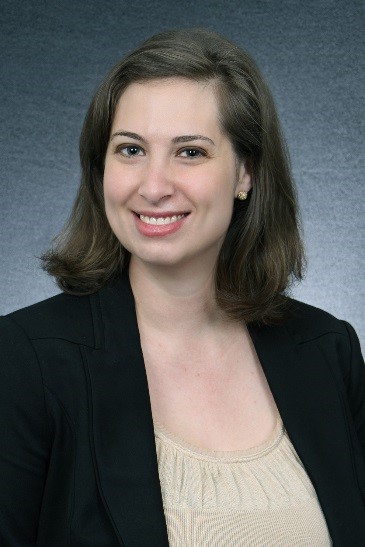 Almost 20 percent of all young people around age 15 are not financially literate — they don’t have skills like budgeting income and expenses, pulling a credit report or understanding the terms of a credit card. Young people who live in lower-income homes are even less likely to be financially literate. Research also indicates that the benefits associated with typical financial education classes are often short-lived: Participants gain some immediate short-term knowledge, but their ability to translate that knowledge into practice later is less likely.
Almost 20 percent of all young people around age 15 are not financially literate — they don’t have skills like budgeting income and expenses, pulling a credit report or understanding the terms of a credit card. Young people who live in lower-income homes are even less likely to be financially literate. Research also indicates that the benefits associated with typical financial education classes are often short-lived: Participants gain some immediate short-term knowledge, but their ability to translate that knowledge into practice later is less likely.
According to the Jump$tart Coalition for Personal Financial Literacy, personal finance is taught most effectively to high school students if it is both interactive and relevant. For example, instead of teaching high school students about mortgages, a program might offer a class on opening a bank account or paying for college. Targeting young people while they are employed, typically during the summertime, is also more effective as they can apply new knowledge immediately and as they receive their paychecks.
One potential resource for helping youth build financial management skills is the Consumer Financial Protection Bureau’s (CFPB) “Your Money, Your Goals” toolkit.
The CFPB developed the toolkit in 2014 so that frontline staff who work directly with clients have ready-made, practical tools to help them build financial skills. The toolkit, which is free and available on the CFPB’s website, contains more than 35 tools that can be used with a variety of clients at different stages of life, including those getting their first jobs and transitioning to living independently. Tools are arranged in nine modules:
- Setting goals and planning for large purchases.
- Saving for emergencies, bills and goals.
- Tracking and managing income and benefits.
- Paying bills and other expenses.
- Getting through the month (cash flow).
- Dealing with debt.
- Understanding credit reports and scores.
- Money services, cards, accounts and loans.
- Protecting your money.
Each module of the toolkit contains basic information so the frontline staff can feel prepared to introduce and discuss specific financial topics, even if they are just learning about the topic themselves. Then staff can choose among the tools — like worksheets, checklists and templates — depending on the individual client’s situation.
The CFPB’s website offers materials for agencies to get started with the toolkit. It offers an implementation guide that walks agency leadership through how to train their staff and map out which tools might be most appropriate for their clients. Also available are PowerPoints for use in training frontline staff and a recorded train-the-trainer video. The CFPB also offers a template for creating a referral guide, so staff know where to refer customers for deeper assistance with their financial concerns.
Agencies throughout the United States, such as Community Action Program, Head Start, Catholic Charities and city human services agencies, have adopted the toolkit and trained their staff on how to start a conversation with clients about money. One such agency is The WorkPlace, Inc., an employment agency in Bridgeport, Connecticut, which has focused their implementation of the toolkit specifically on young people ages 16-24 who may not have graduated from high school, have criminal records, be homeless and/or have limited financial resources. The WorkPlace believes that using a flexible and high-quality financial empowerment toolkit like “Your Money, Your Goals” will improve workforce outcomes. It will also benefit frontline staff, who can apply the information and tools to their own lives.
The WorkPlace has not only trained their own staff on using the toolkit, they also introduced a “Your Money, Your Goals” training requirement in 2016 into their contracts with partners who provide work readiness and leadership development programming to out-of-school youth. These partners must train their staff on the toolkit with the expectation that they use its tools with The WorkPlace’s customers.
They purposefully trained their entire network in the same set of financial education tools so that they could offer a “no wrong door” approach, meaning that clients can receive consistent financial information and skills across several types of service providers, explained Nestor Leon, vice president of operations and head of The WorkPlace’s “Your Money, Your Goals” integration effort.
The WorkPlace has found opportunities to teach financial literacy concepts through Your Money, Your Goals at critical points when it is relevant in their young customers’ lives — and therefore when it is most likely to be retained. One example was The WorkPlace’s 2016 Summer Youth Earn & Learn Employment Program, where they reached an audience of approximately 600 as part of a career development and life skills training with instruction on cash flow, goal setting and setting up a bank account. Leon says that although they targeted youth ages 16-24, they learned that “the value of financial literacy is never too late to learn.”
As you prepare young people to enter the workforce and live independently, consider what role financial literacy — or illiteracy — might have in their success. Download the toolkit and identify a handful of tools that you could tie into your work. Keep copies of the tools at your desk so you can share them at opportune moments. Remember, you don’t have to schedule a semesterlong class or become a tax accountant to start a conversation that can set someone on the path to financial empowerment.
Emily Appel-Newby, MPA, is a manager at ICF with the Family Self-Sufficiency team. She previously served as a program director at Capital Area Asset Builders, which seeks to empower low- and moderate-income residents of the Greater DC Area to take control of their finances, increase their savings and build wealth for a better future. Emily Schenck, previously an analyst at ICF, also contributed to this article.





























